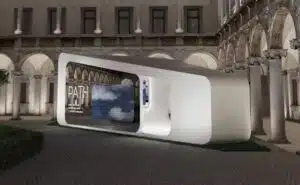Change the way of conceiving the urban periphery and, with a view to adjusting to the standards and the approaches of major European metropolisesespecially in recent decades the urban planning saw various processes of intervention on the city in many respects, both in terms of the objectives to be achieved and the application of new methodologies.
With regard to the aspect of targets, the widespread attitude of urban green was dictated by the need to respond to the new needs of a society increasingly 'victimised' by the effects of the sudden and inexorable expansionist logic of cities.
While this growth has been characterised by great economic development, it has also seen the emergence of various problems related to the expansion of the boundaries of urban areas.
Within this established situation are the new planning projects, which intervene in cities in order to provide urban balance and restore quality throughout the
territory.
The major interventions of redevelopment of the city are concentrated on the peri-urban and peripheral areas, i.e. those areas from which the population is moving away due to a lack of facilities, and into the central areas, which are the real attraction for citizens.
I processes of suburban redevelopment start from the objective of achieving a certain functional autonomy, thanks to the inclusion of services and facilities, around which residential neighbourhoods should gravitate. The new strategy of an increase in urban quality is also intended for these, intervening on physical and social degradation through greater attention to the landscape, the use of urban green spaces, care for the environment, biodiversity and sustainable development, for a modern city on a human scale.
These issues have strongly influenced and influenced contemporary urban planning decisions, so much so that they have given rise to guidelines for city planning, based on a development concept that starts from the urban green.
But which green areas are affected by the new urban planning?
La urban green network includes a large number of areal and linear elements summarised in 5 categories:
- Areas of Naturalistic Interest - are those areas of environmental value, in which there is the presence of valuable flora and fauna species (forests, meadows, wetlands, etc.)
- Recreational green spaces - green areas, such as urban parks, equipped gardens, historical villas, botanical gardens, etc., which accommodate recreational, sports and educational-cultural functions, aimed at recreation and socialisation.
- Private and appurtenant green areas - are the private green spaces for sports, pertaining to public and private residences and services, nurseries, farms, as well as green areas pertaining to infrastructures (driveways, bicycle and pedestrian paths, etc.).
- Agricultural areas - vegetable gardens and small-scale domestic crops, as well as extensively cultivated areas and pastures.
- Natural and artificial urban voids - areas without buildings in the city (squares, car parks, pedestrian areas, etc.).




